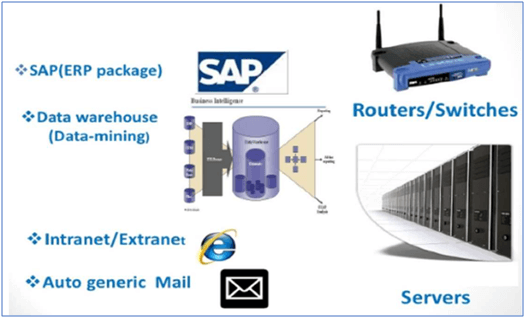As competition intensifies in the construction market, procurement department plays a critical role in the construction industry, as it has to manage the project execution and closure in time. This can be explained in terms of material order planning with budget allocation, budget planning and cost savings, and to ensure delivery of material to site on time, without jeopardize the entire project activities.
This article attempts to examine the best practices for procurement and purchasing in the construction industry. But first, let us differentiate the terminologies of procurement and purchasing. Purchasing covers the system and processes from sourcing to order management. Procurement involves the strategic implementation of Purchasing, as well as, active interaction with both internal customers and the external suppliers, through Supplier Relationship Management (SRM). The chart below illustrates the difference between Procurement and Purchasing.

“Singapore’s Building and Construction Authority (BCA) has already released its forecast that the value of construction contracts awarded this year will increase between SGD 26 million to SGD 31 billion”.In view of the above statement, below are six procurement best practices that can be applied to maximize the value contribution of procurement to organizations.
Table of Contents
Selecting the Right Technology
Companies must understand that not all the procurement software will automatically improve efficiency, and these require to be assessed by the current process first. This is so in order to understand where improvement is needed, and then by selecting the right software to meets the requirement. The right system will allow data to be taken in and meaningful information to be retrieved.
With the volume and availability of data, new technology makes it easy to track decision-making processes. Furthermore, Historical data can be used to create benchmarks for future performance as well. With the help of technology, procurement agility can be increased and provide value to the organizations

Collaborative Strategic Sourcing
Strategic sourcing skills play an important role in the cost structure, and the main objective of strategic sourcing is to improve the acquisition process, supplier performance and minimizing risk. Collaborative sourcing is the best way to mitigate category and supplier risks that could threaten current or future business operations.
Collaborative approach involves internal customers in the process of decisions making. There is meaningful conversation about procurement objectives and strategies when feedback channels are created, which leads to lower costs, efficient processes and better responsiveness to customer needs.
And another involvement is analyzing high-volume purchase and developing long-term partnerships with a selective group of suppliers that are able to provide quality products and services at low costs.
Looking Beyond the Purchase Price
Successful procurement is not obtaining the lowest price, but in fact by getting the right specification at the right cost is imperative.A focus on total cost ownership allows a move from just an eye on the purchase price to the complete cost of owning and using an acquired material or service, rather than depend on suppliers’ decision based on price quoted, it is better idea to consider costs such as operating, storing, maintenance, training requirements, environmental impacts, transportation and the costs of disposal.
Establishing Control Level and Minimising Risks
Policies and procedures for procurement need to have structure and a sequence. Both need to be reviewed and updated regularly to remain relevant and effective. There is a stronger chance of the processes being followed if they are realistic and easy to understand. The right balance of complexity and control needs to be created when looking at these policies and processes.
There should be no bottlenecks and there should be a smooth running process with the right controls to prevent theft, fraud, and other issues.Risk mitigation is an important aspect of procurement that needs to be a part of the policies and controls. The important aspects here are to identify all risks, determine the probability of a risk occurring, assess the cost impact of the risk on the procurement activities and prioritize for prevention and monitoring.Risk management may also involve developing alternative sources in case of natural disasters or financial problems cause disruptions in the supply chain.
Alliances with Key Suppliers
Good working relationship with suppliers is needed to manage sole course or sole supplier as the balance of power lies with the supply source. Through effective two-way communication, both supplier and the organizations will work together to strengthen the relationship, and it is essential to influence on the quality of contract performance. It also allows for a place where problems can be resolved, work can be done on continuous improvement.
The foundations that are needed to form a working relationship with suppliers are Respect; Trust; Mutual benefit; Fairness; and Honesty. Building a strong partnership should take into consideration when selecting suppliers. A good partnership can strengthen organization’s business. On the other hand, good suppliers also want to build strong partnerships because that builds a strong business for them too. The selection, cultivation and building up supplier relationships should be a continuous process that strives to balance organization’s business needs.
The full content is only visible to SIPMM members
Already a member? Please Login to continue reading.
References
Jasline Kong Hui Ling, DPSM. (2018). “Effective-procurement and Key Performance Indicators”. Retrieved from SIPMM. https://publication.sipmm.edu.sg/effective-procurement-key-performance-indicators , accessed 15/12/2018.
Marc Win. (2018). “5 Steps To A Successful Strategic Procurement”. Retrieved from https://www.procurement-academy.com/5-steps-to-a-successful-strategic-procurement-process, accessed 15/12/2018.
Michelle Wan, PDPM. (2018) “Eight Key Strategies to Reduce Cost in Construction Sector” Retrieve from SIPMM. https://publication.sipmm.edu.sg/eight-key-strategies-reduce-cost-construction-sector, accessed 15/12/2018.
Ng Shi Yun, PDPM. (2017). “5 Key Criteria for Supplier Evaluation in the Construction Sector”. Retrieved from SIPMM: https://publication.sipmm.edu.sg/5-key-criteria-supplier-evaluation-construction-sector, accessed 15/12/2018.
Singapore Business Review. (2018). “Optimistic 2018 outlook for Singapore construction sector”. Retrieved from https://zebelle.sg/zebelle/latest-news/, accessed 15/12/2018.

